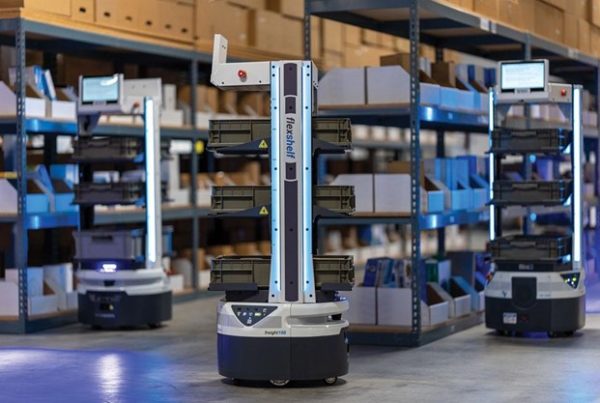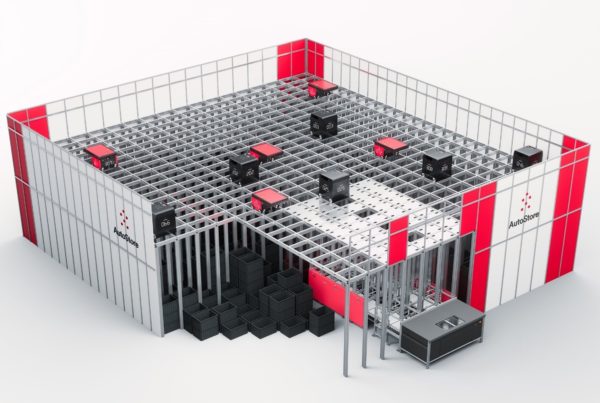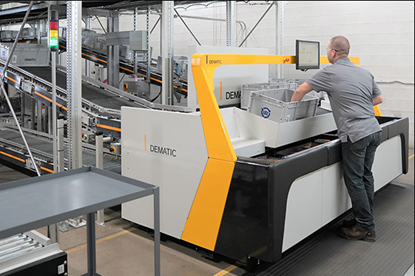Hello everyone, and welcome back to our 4th and final article in the GTP series. Now that we have talked about what Goods-to-Person is, the various technologies you can choose from, and where to apply them, it is prudent to go into ROI and future trends.
Saving on Movement
GTP systems may differ greatly in how they perform, and what functions they excel at, however their ROI measures are quite similar. The primary ROI drivers for GTP systems will always be labor related. There are a couple different ways GTP systems can provide labor related ROI, the first of which being cutting out movement time.
Obviously, the goal of any GTP system is to move product for you, so that you don’t have to manually transport product from its storage location to an associate. This is the easiest form of savings to calculate because you can accurately measure your savings in house. If you have metrics for individual productivity, you can simply use those, however often times it will be necessary to conduct a quick time study.
With a time study, you should try and determine average time spent achieving each of your processes in order to complete a single order. Typically, this will involve a picker walking between manual storage locations, grabbing product, and then bringing the product to a consolidation area. From there, things vary, however picked product is generally sorted into orders, placed into appropriate shipping cartons, and then loaded onto trucks.
Obviously with a GTP system, you are primarily saving time with the first two phases. For example, it is common to see pickers take minutes to pick an order, and then another minute to drop it off at a consolidation area. A typical GTP setup will bring product directly to the pick station, at which point it can be immediately consolidated.
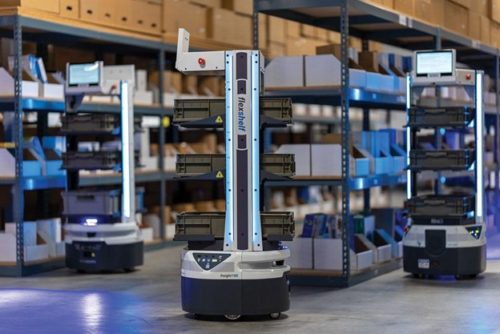
SKU Robot
Generally, manual pickers can get anywhere between 20 lines to 80 lines an hour, and that doesn’t typically account for travel time to consolidations. A typical shuttle or AutoStore system will allow an upward of 350 lines per hour (per operator) and depending on the setup can entirely cut out the time spent moving to a consolidation area. This means that in our scenario (assuming 50 LPH), pickers will be seven times more efficient with a GTP station, not accounting for the additional savings in consolidation.
Once you have this figure, all you need to do is multiply the savings by your hourly cost per FTE, and then factor in the time spent working in a year. For an operation working 16 hours a day, for a full year with an assumed pay rate of $17 per hour, this would equate to $424,320 dollars saved in a single year. When you couple in consolidation efficiency and add in some conveyors or AMRs to get to shipping, the ROI truly speaks for itself.
Labor Retention
A further aspect of labor ROI is labor retention. With GTP systems, operators will not have to walk miles a day scouring your inventory for products. As you can imagine, not walking a half marathon every shift could be considered desirable especially in areas with a harsh climate. Statistics vary, but operations putting in GTP systems see significant cost savings by retaining employees longer and lowering trainings costs. In some training intensive operations, these costs can quickly add up to tens of thousands, or more per quarter.
Increasing Order Accuracy
Another ROI metric that needs to be considered when weighing the cost of a GTP system is order accuracy. According to DC velocity, miss-picks cost individual warehouses $400,000 dollars a year, at an estimated value of $3 to $7 dollars per miss-picked item. While your volume may or may not corroborate those metrics, it’s easy to see how miss-picking an item, having to ship it, restock it, and handle it multiple times can add up.
GTP technology can drastically cut miss-picks by simply presenting totes to an operator, and designating via light or screen: order SKU, quantity, and order tote. While errors are still possible with these systems, they tend to be mitigated because the product required to fulfil orders is brought to an operator automatically removing the opportunities for human errors. In 2021, product return rates in the retail industry jumped up to 16.6%, a full 6% increase from 2020.
Security
For some warehouses, security is another extremely important advantage possessed by GTP systems. Including most of the technologies mentioned, you can designate users who will have access to sensitive products. With high dollar items, or controlled substances, it becomes virtually impossible for theft to occur. Systems such as VLM’s, Shuttles, and AutoStore, the products are almost completely inaccessible to manual picking.
It makes unauthorized users have no way of gaining access to product unless they are willing to do so in broad daylight with a large quantity of loud power tools. GTP is becoming especially popular in the pharmaceutical industry, where theft has been a problem in the past. Other forms of shrinkage like mishandling of product also sharply decline when GTP systems are implemented since it becomes difficult to access a product accidentally.
Future Trends & Integration Options
In a world filled with ever increasing consumer demands and supply chain challenges, the need for automation grows every day. The global market for AS/RS technologies is expected to hit $11 billion a year in 2026, with a growth of over 7% year over year. Since AS/RS is just one form of a GTP solution, it is safe to say the market has an even greater demand for GTP than anticipated.

ASRS
When looking at future GTP trends, I think the most striking to me is the innovating integration options that are being continually developed. Many of these systems were originally designed to be enclosed problem solvers for a particular process, however we are quickly seeing more and more of them become integrated with other various forms of automation.
For example, many of these systems are being designed with outfeeds that will automatically deposit totes onto a conveyor, and send them directly to shipping, bypassing another full process. Another technology I see getting paired with GTP increasingly often is robotics. As robotic solutions become cheaper and more capable in warehouse settings, we will increasingly see them integrated with GTP stations.
I believe some operations will eventually utilize robotic arms for picking out of totes presented by GTP systems. Concepts utilizing these two technologies together are not new, however the economics involved with consumer electronics dictate that robotics will likely become cheaper over time relative to solutions. I would estimate that by 2030 robotic GTP integrations will be commonplace.
Thank You
In summary, GTP solutions can provide an excellent ROI for many different operations and will continue to do so as the solutions become more and more creative. While there are some savings you can likely pinpoint yourself, I would be happy to provide my GTP expertise, and make sure you find the perfect system for your needs. Slate River Systems can design and implement the perfect GTP solution for you, as we offer all the technologies we have discussed in this series. Please feel free to reach out to me via email, or cell. Thank you for taking the time to learn about the future of automation, I look forward to hearing from you!
Account Executive
Slate River Systems
682-551-6849
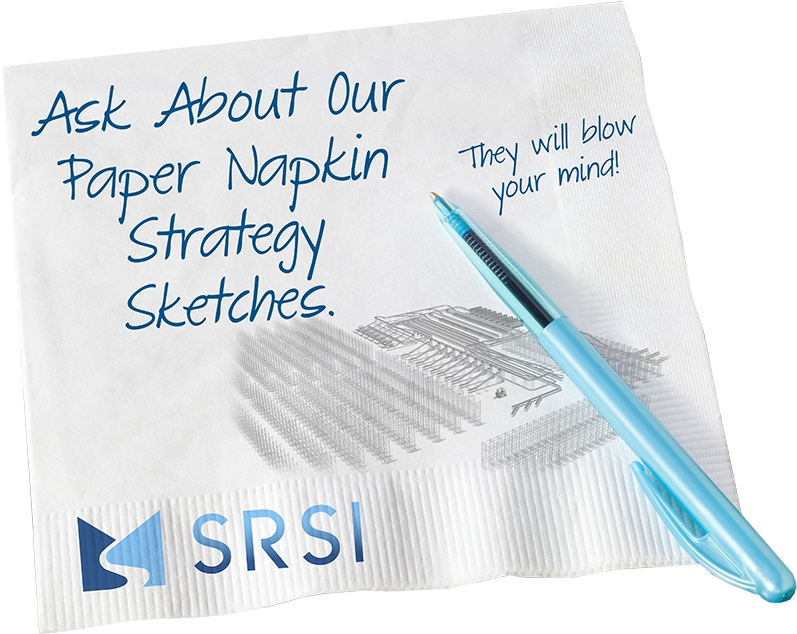 Skip to main content
Skip to main content

